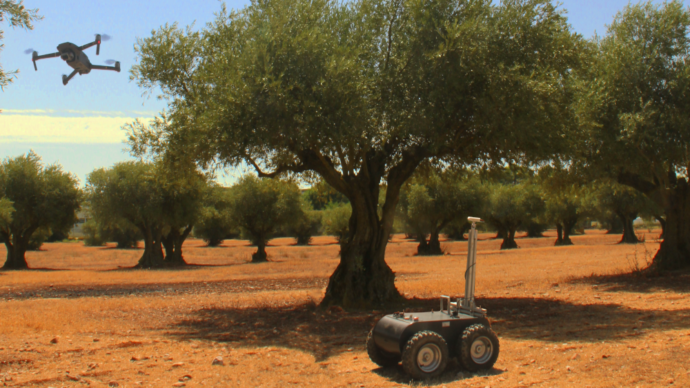Question: Robots in the Farm? Global reports that provide insight and predictions claim that the Agricultural Robot Market is anticipated to reach 15B€ by the end of 2020. The farming processes which are based on Precision Agriculture (PA) techniques often require:
- Repetitive tasks. Same PA tasks looped many times per day.
- Intensive data collection. Data collection data from sensors, images, video etc regarding soil, irrigation, plant growth, pests, weather conditions etc.
- Awareness and Prediction. Tools for farm awareness and prediction (decision support and crisis management tools) for several circumstances (e.g. extreme weather conditions, pest invasion and spread).
- Protection and security. The PA installations require many times means of safeguarding.
Robotics in Precision Agriculture support the automation of the aforementioned farming processes and could have positive effects regarding saving energy, time and cost as well as increase of the overall productivity.
Tasks such as tillage, planting, harvesting, pest detection and prevention and sowing of seeds could rely on the latest robotics technologies (vehicles, robotic arms etc.) in combination with tools already used as geospatial application, satellite imagery, drones, sensors and more.
In addition, robots have a variety of sensors embedded with which several key production data could be collected, regarding critical parameters (humidity, temperature, soil quality, precision irrigation etc.) with images and video of the overall plantation.
In addition, key software and hardware vendors stand behind this new powerful market providing algorithms and tools for Simultaneous Localization and Mapping, Computer Vision, AI, Human – Robot & Robot – Robot Collaboration Tools and Networks.
References:
https://www.azorobotics.com/Article.aspx?ArticleID=113
Josse De Baerdemaeker, Precision Agriculture Technology and Robotics for Good Agricultural Practices, 5th IFAC Conference on Bio-Robotics, Volume 46, Issue 4.

